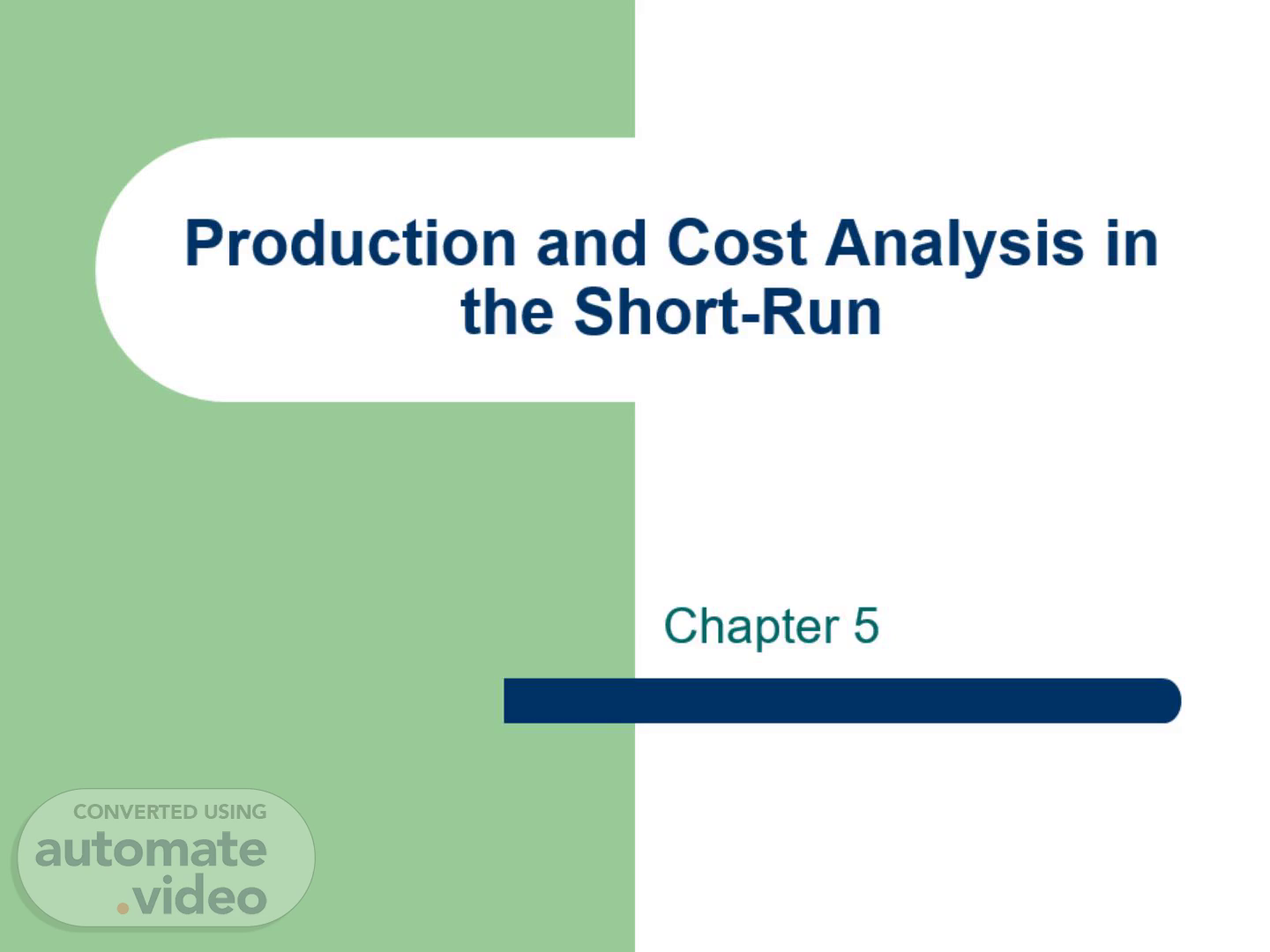Scene 1 (0s)
[Virtual Presenter] This chapter looks at short-run production and cost. In the short-run, all production functions incur diminishing returns when variable inputs are used relative to at least one fixed input, reducing the additional amounts of the output being produced. Diminishing returns in production causes a short-run increase in the marginal cost, as production of more output becomes increasingly costly. The Wall Street Journal article on page 113 illustrates the relationship between efficiency and costs in the fast-food industry, where speed of service at drive-through windows determines the competition for market share. In addition, the discussion of the empirical evidence demonstrates that the theoretical U-shaped cost curves may not always be appropriate in real-world firms and industries. Case for Analysis: The Long-Distance Journey of a Fast-Food Order (p. 113) -Fast-food restaurants use drive-through windows to increase profitability. Sixty-five percent of revenues come from drive-through windows for fast-food outlets such as Wendy’s, McDonald’s, Burger King, Arby’s and Taco Bell. -Production technology changes include the following. The use of separate kitchens for drive-through windows. Timers to monitor the time it takes the customers to drive from the menu board to the cash/ pickup window. Redesigning kitchens to minimize unnecessary movement by the workers. Use of remote order-taking to cut costs. -Remote order-taking from a call center is a new development that is being tested by 50 McDonald franchises. The trade-offs with increased speed at the drive-through windows are employee dissatisfaction and stress with constant monitoring, and decreased accuracy in filling orders. There have also been break-downs in communication over long distances. -Fast-food restaurants try to gain an advantage over their competitors by: Increasing the number of customers. Decreasing the costs of production through changing the production technology, lowering input prices, and changing the scale of operation..
Scene 2 (2m 15s)
[Audio] Defining the Production Function Production Function: The relationship between a flow of inputs and the resulting flow of outputs in a production process during a given period of time. The production function shows the maximum amount of output that can be produced with a given combination of inputs. Equation 5.1 (p. 115): Q=f(L, K, M,…) where: Q= quantity of output L=quantity of labor input K=quantity of capital input M=quantity of materials input The production function is a general function and can be applied to large-scale production processes as well as production in small firms..
